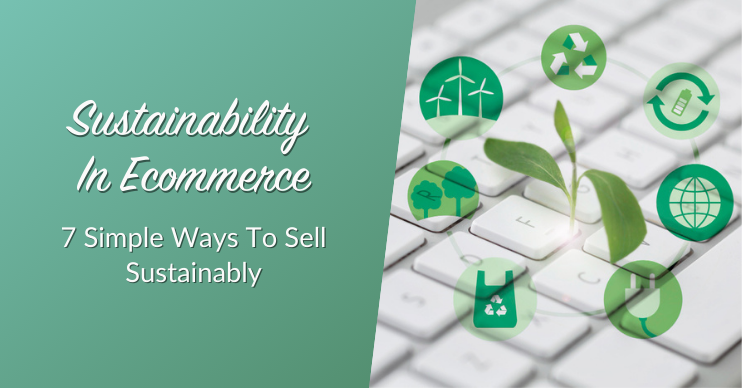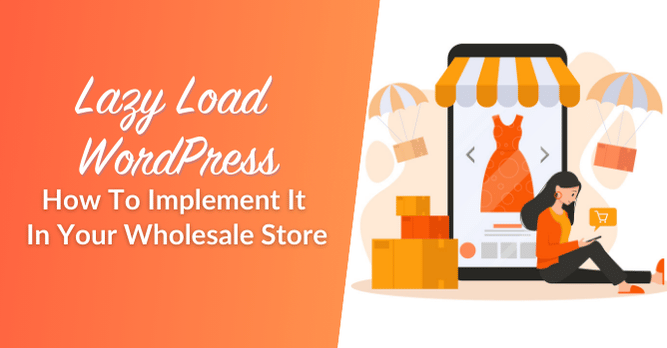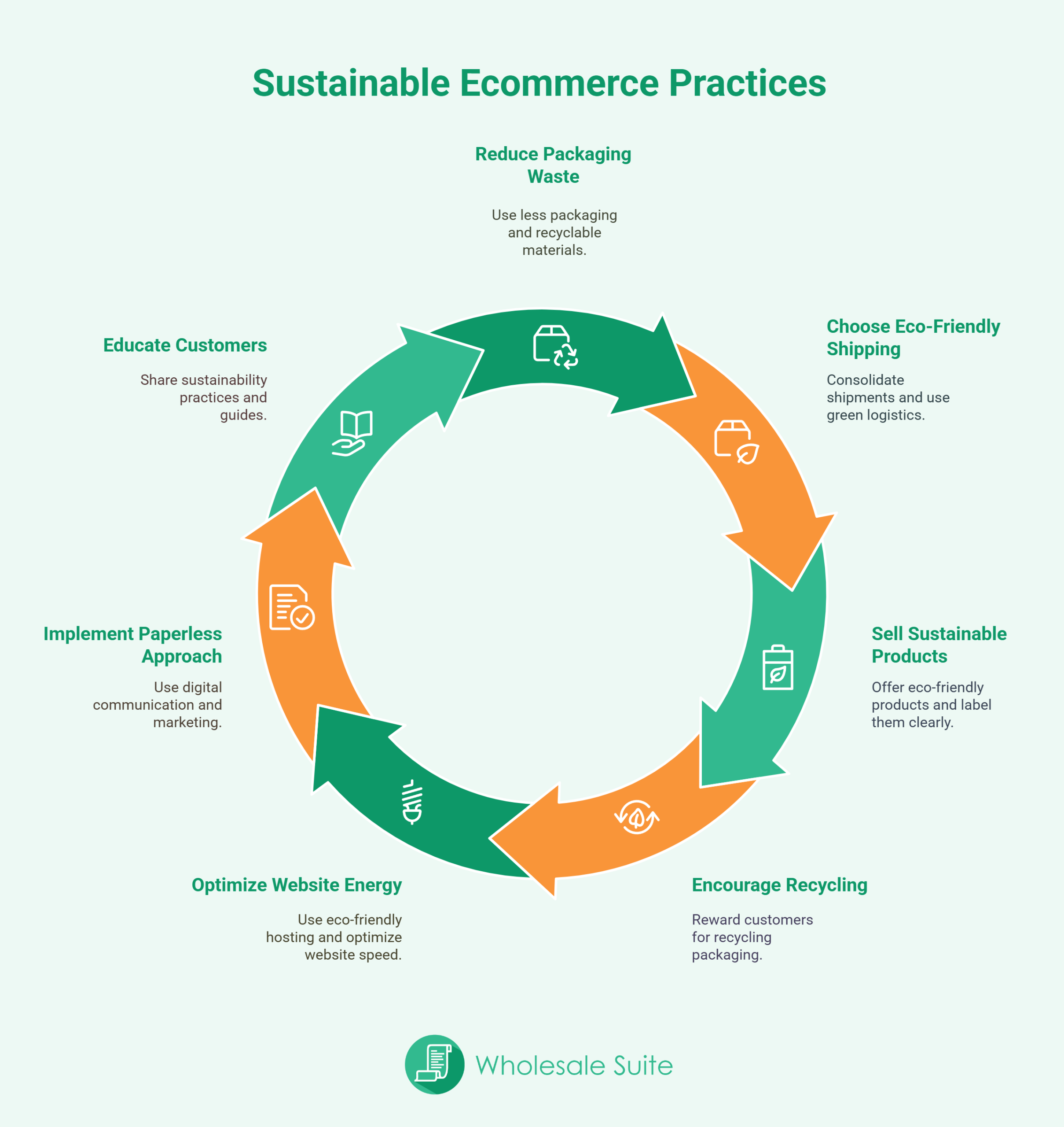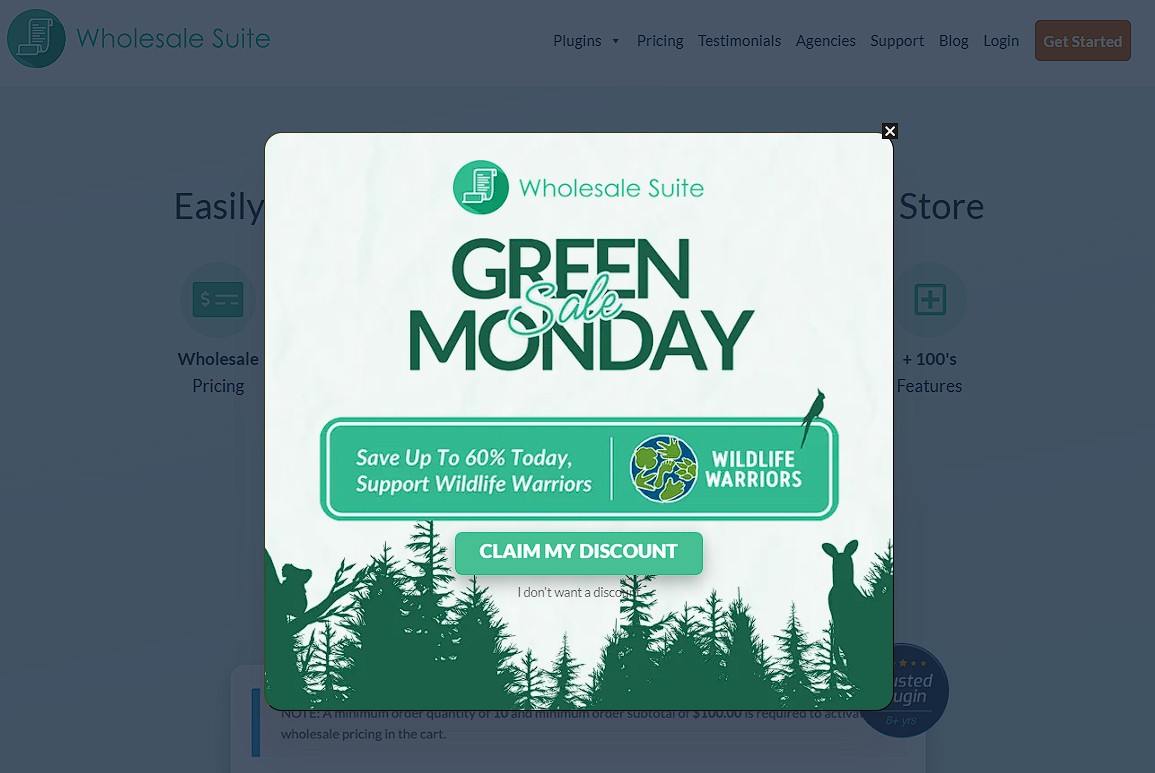
Sustainability in ecommerce means running your online store in ways that help the environment. This includes using less plastic, saving energy, and selling products that are safe for the environment. Today, more shoppers care about buying from stores that help protect nature.
As an ecommerce business owner, practicing sustainability can make your customers happy, lower your store’s costs, and help the planet stay clean and healthy. It might seem tricky at first, but there are simple ways you can do it without spending too much money or time. In this article, you’ll learn exactly how to do that in 7 simple ways.
Let’s start!
Why Sustainability In Ecommerce Matters
Many people today live by advocacies and initiatives to buy from brands that care about the planet. That’s why sustainability in ecommerce is becoming more important.
According to Statista, retail ecommerce sales are projected to hit more than $1.6 trillion by 2025. Moreover, according to a Nielsen report, 73% of shoppers would definitely or probably change their consumption habits to reduce their environmental impact.
These reports can also influence selling in a more earth-friendly way, which can help your ecommerce business spend less over time. For example, using smaller or reusable packaging can save you more money, and sending fewer deliveries by packing items together can also lower costs. These small changes add up, and help you run a more sustainable ecommerce business that doesn’t waste as much.

Most of all, sustainability in ecommerce helps protect the environment. How you pack, ship, and choose products has an environmental impact. If your store uses too much plastic or ships items one by one, it can potentially harm nature. But when you switch to better habits, your store becomes part of the solution. Helping the planet while running your store makes a real difference.
7 Simple Ways To Practice Sustainability In Ecommerce
Doing your part to help the environment doesn’t have to be hard. There are many small changes you can make in your ecommerce business that can lead to big results. These changes will help you build a more sustainable ecommerce business while still making customers happy. Let’s go through each one.
1. Reduce packaging waste
One of the easiest ways to practice sustainability in ecommerce is by using less packaging. Many online stores use too many layers of plastic or boxes that are too big, which creates a lot of waste. You can use boxes that fit the products better and avoid plastic fillers.
It’s also helpful to switch to recyclable or compostable packaging. These types of materials can break down safely without harming the planet. This simple change lowers your store’s environmental impact while still helping customers feel good about shopping with you.
2. Choose eco-friendly shipping methods
Shipping plays a big role in your store’s environmental sustainability. Sending out many small packages uses more fuel and contributes to pollution. One way to fix this is by consolidating shipments. This means putting several items in one package, so fewer trips are needed.
Another way to help is to work with green logistics providers. These are shipping companies that care about the environment. They use better routes, cleaner trucks, or even electric vehicles. This is a smart move for any eco-friendly ecommerce store.
3. Sell sustainable or eco-friendly products
What you sell also affects your ecommerce sustainability. Try to work with suppliers who care about the earth. For example, some suppliers make goods using recycled or natural materials. These products are safer and better for the planet.
If you offer eco-friendly products, be sure to clearly label them on your website. This will help shoppers know which items match their values, build trust, and make your store stand out from others.
4. Encourage recycling or reusing
You can also make a difference by getting your customers involved. A great idea is to offer rewards for people who reuse or recycle packaging. For example, you can give a small discount if they return empty boxes or jars.
It also helps to give clear instructions on how to recycle your packaging. Some people want to recycle but don’t know how. A simple note in the box or a page on your site can go a long way. This makes your sustainable ecommerce efforts stronger.
5. Optimize your online store to reduce energy
Your website also uses energy. Every time someone visits your store, the page takes power to load. You can lower this by choosing an eco-friendly web hosting service.
It also helps to optimize your website speed. A faster site not only saves energy but also gives your visitors a better experience. This small update supports both your business and the planet.
If you want to save power through faster loading on a website, you may read about “Lazy Load WordPress: How To Implement It In Your Wholesale Store.”

6. Implement a paperless business approach
Going digital can reduce paper waste. Instead of printing invoices and receipts, send them through email or chat. Talk to your customers through email or chat instead of printed letters.
You can also switch to digital marketing instead of using flyers or brochures. This cuts down on paper and makes your store feel more modern. A paperless approach helps you build a cleaner and more sustainable ecommerce business.
7. Educate customers about sustainability
Sharing what you’re doing matters. People who know about your efforts are more likely to support you. Use your product pages, blog, or emails to talk about your sustainability practices.
You can also create simple guides or posts to teach customers about topics like recycling, shipping choices, or supply chain transparency. This shows you care and helps spread good habits to others.
Challenges To Watch Out For (And How To Solve Them)
Starting a sustainable ecommerce business sounds great, but it can come with a few challenges. The good news is that these challenges can be solved with the right steps. Here are some common problems when working toward sustainability in ecommerce, and how you can handle each one.
Finding reliable eco-friendly suppliers
One challenge is finding suppliers who care about environmental sustainability. Some suppliers may say they are eco-friendly, but don’t always show proof. This makes it hard to trust that their products or practices are truly safe for the environment.
To fix this, always ask for details. Good suppliers can show certifications, share how their products are made, or tell you what materials they use. Check their reviews or ask for samples. Taking time to check helps you make better choices for your ecommerce business and keeps your supply chain transparency strong.
Handling higher upfront costs
Another challenge in eco-friendly ecommerce is the price. Recycled packaging or green shipping options can sometimes cost more at the start. But remember, these small investments often lead to bigger savings later on.
For example, packing items together or choosing reusable packaging cuts shipping costs. Digital tools also help you save money by reducing paper and energy use. If you’re careful with your spending, your ecommerce sustainability plan can support both the planet and your budget.
Customer skepticism
Some people might not believe your business is truly making eco-friendly choices. This is called customer skepticism, and it can be frustrating, especially when you’re trying to do the right thing.
The best way to handle this is by being open. Share real updates about what your store is doing. Post photos of your packaging, explain your green shipping options, or talk about your sustainability in ecommerce steps. Being honest builds trust and helps your shoppers feel part of the mission.
Wholesale Suite: Tools Made For Better B2B And Greener Operations
If your store handles wholesale orders, you may use tools like Wholesale Order Form, where you can accept large orders on a single page, helping you group shipments together. This reduces waste and lowers the environmental impact of your shipping. Likewise, Wholesale Prices Premium plugin lets you set custom prices for different buyer types. This helps you organize your stock better and avoid overproduction. You can also go paperless with Wholesale Payments. This tool allows you to handle invoices and billing online, which means no need to print and send paper statements. It’s a great step toward a cleaner, more digital setup for your sustainable ecommerce business.
Also, Wholesale Lead Capture can help you manage wholesale registrations. Instead of collecting paper forms or long email chains, everything is done through a smart online process. It supports supply chain transparency by keeping buyer information accurate and easy to manage without wasting time or materials.
Plus, with Wholesale Suite’s Green Monday Sale, you can get these plugins at a discount. This sale happens once a year and gives store owners a chance to upgrade their systems while also moving toward eco-friendly ecommerce advocacies. It’s a smart step for any growing ecommerce business.
What makes Wholesale Suite even more sustainable is that 10% of its profits during Green Monday will be donated to a chosen organization that supports sustainability or wildlife conservation. It’s a way of giving back and helping create real change with the community.
Frequently Asked Questions
What is the concept of sustainability?
Sustainability means caring for the world so future generations can live well too. It’s about using what we need today without hurting the planet. In business, this means using fewer resources, wasting less, and making better choices for the earth.
What is sustainability in shopping?
Sustainability in shopping means buying products made and sold in ways that are better for the environment. This includes items that use natural or recycled materials, come in less packaging, or are made by companies that care about nature. When customers choose these products, they help reduce waste and pollution.
How can a product be made more sustainable?
A product becomes more sustainable when made with care for people and the planet. This can mean using safe, natural, or recycled materials. It also helps if the product lasts long or can be reused. If it’s made in a way that uses less water or energy, that’s even better. Making packaging smaller or easier to recycle is also a smart way to support sustainability in ecommerce.
Final Thoughts
Running a store while caring for the planet is not only possible — it’s becoming more common. Ecommerce business owners today are choosing better ways to pack, ship, and sell their products. These simple choices help create a more sustainable ecommerce business and make customers feel proud to support you.
In this article, we discussed how you can support and maintain a sustainable ecommerce business:
- Why sustainability in ecommerce matters
- 7 simple ways to practice sustainability
- Challenges and solve them
- Tools for greener operations
Don’t feel pressured to change everything overnight if you’re just starting. You can begin with one small change, like using recyclable packaging or switching to a green web host. Every action matters. The more you practice ecommerce sustainability, the more natural it becomes. And remember, your choices don’t just help your store — they help the planet too. You’re building something that lasts and gives back.
Do you have questions or suggestions about sustainability in ecommerce? Let us know in the comments!






